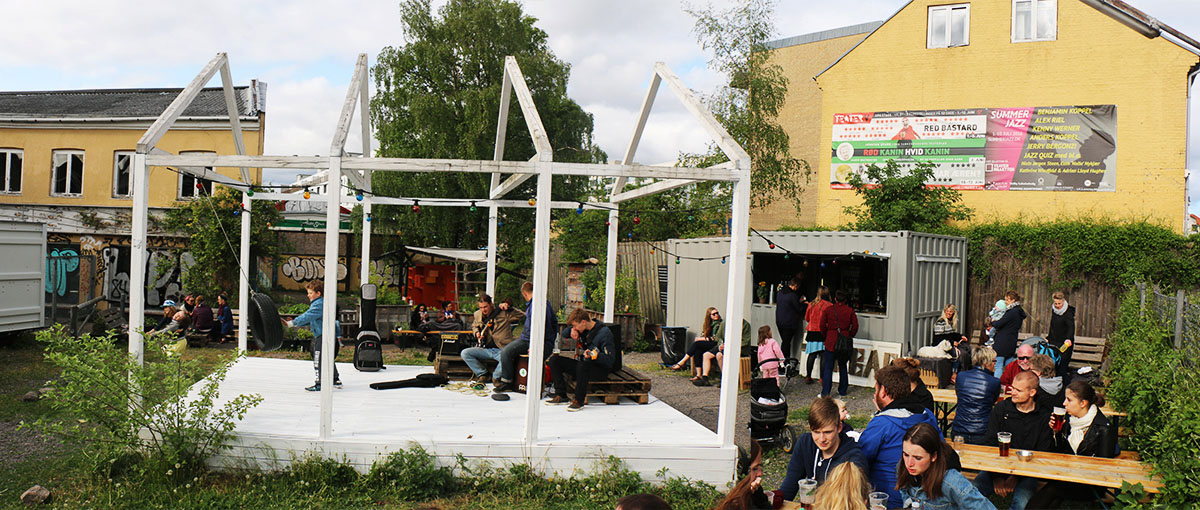Situating temporary public urban settings in design critique
Downloads
DOI:
https://doi.org/10.7480/spool.2018.1.1944Keywords:
critique, criticism, temporary urban public space, site understanding, narratives, placemaking, performativityAbstract
Public spaces emerge through a diverse field of practices and events that combine to make space and create meaning. In today’s design and planning practice, temporary interventions play an increasing role in the creation and rethinking of public space ‘on the go’. In such transitional interventions, ‘the project’ is both physically and symbolically created through entangled actions of design with somewhat non-designed and informal practices and DIY aesthetics, as well as various narratives and modes of communication.Temporary public spaces thereby challenge established ways of evaluating and critiquing spatial settings as determined design solutions or ‘classic’ architectural works—in terms of what they do and how they can be qualitatively understood as part of contemporary place-making approaches. This article forms a critique of the project Valby Pavilion, a temporary space in Valby (Copenhagen, Denmark) that serves as a test setup for the future use of its highly contested site. Through a juxtaposition of selected theoretical perspectives from art and architectural criticism to relational site thinking and performance studies, the discussion of the project elaborates upon which aspects require detailed attention when performing a critique of temporary urban public spaces. The article concludes that critical examination of a number of issues (intentionality and origin, the role of spatial adaptions, appropriation, events and situated public debate, dominant planning paradigms, and the characteristic aesthetics of the informal) helps to fruitfully locate public settings initiated under the ‘temporary project’ label within design and architectural critique.
How to Cite
Published
License
Copyright (c) 2020 SPOOL

This work is licensed under a Creative Commons Attribution 4.0 International License.

References
Boym, S. (2008). Ruinophilia: Appreciation of Ruins. Atlas of transformation. Retrieved from: http://monumenttotransformation.org/atlas-of-transformation/html/r/ruinophilia/ruinophilia-appreciation-of-ruins-svetlana-boym.html
Braae, E. (2015). Beauty Redeemed – Recycling post-industrial landscapes. Risskov/Basel: Ikaros Press & Birkhäuser.
Carroll, N. (2009). On Criticism. New York, NY: Routledge.
Dahl, C. (2016). Gothenborg’s Jublieumsparken 0.5 and Frihamnen: explorations into the aesthetic of DIY. SPOOL, Vol. 3, Issue 2, 2016, pp. 73-86. DOI: http://dx.doi.org/10.7480/spool.2016.2.1115
Diedrich, L. (2013). Translating Harbourscapes. Site-specific Design Approaches in Contemporary European Harbour Transformation. PhD Thesis. Frederiksberg: Department of Geosciences and Natural Resource Management Copenhagen University.
Fischer-Lichte, E. (2004). Ästhetik des Performativen. Frankfurt am Main, Germany: Suhrkamp Verlag.
Gusevich, M. (1991). The Architecture of Criticism—A Question of Autonomy. In Kahn, A (Ed.), Drawing/Building/Text—Essays in Architectural Theory (pp.8-25). New York, NY: Princeton Architectural Press.
Jacobs, J.M. & Merriman, P. (2011). Practising architectures, Social & Cultural Geography, 12:03, 211-222, DOI: 10.1080/14649365.2011.565884
Jalving, C. (2011). Værket som handling. Copenhagen, Denmark : Museum Tusculanums Forlag.
Kahn, A. (2005). Defining Urban Sites. Burns, C. J. & Kahn, A. (eds.) Site Matters. New York, NY: Routledge, pp 281-296.
McLeod, M. (1987). On Criticism. A Symposium on the Criticism of Place. Places Journal (Vol. 4, no. 1) Pp 4-5. Retrieved from: https://placesjournal.org/assets/legacy/pdfs/on-criticism-mcleod.pdf
Oldenburg, R. (1989). The great good place: cafes, coffee shops, community centers, beauty parlors, general stores, bars, hangouts, and how they get you through the day. New York, NY: Paragon House.
Oswalt, P., Overmeyer, K. & Misselwitz, P. (2013). Urban Catalyst –The Power of Temporary Use. Berlin, Germany: Dom Publishers.
Reynolds, R. M. (2015). Desire for the Gap. Axon, Creative Explorations, Vol 5, No 1,Issue 8, Creative Cities. Retrieved from: http://www.axonjournal.com.au/issue-8-1/desire-gap
Samson, K. (2010). Det performativt æstetiske byrum. Juul og Frost Arkitekter, Institut for Miljø, Samfund og Rumlig Forandring, Roskilde Universitet, ph.d.-afhandling.
Schechner, R. (2013). What is Performance Studies. Special Issue on Performance Studies, Vol. V, Nr 2 , Rupkathka Journal - On Interdisciplinary Studies in Humanities, pp 2-11.
Vallance, S., Dupuis, A., Thorns, D., Edwards, S. (2017). Temporary use and the onto-politics of ‘public’ space. Cities Volume 70, pp. 83-90. https://doi.org/10.1016/j.cities.2017.06.023
Wagner, A.M. (2016). Permitted Exceptions—Authorised Temporary Urban Spaces between Vision and Everyday. PhD Thesis. Copenhagen, Denmark: Department of Geosciences and Natural Resource Management, Faculty of Science, University of Copenhagen.



